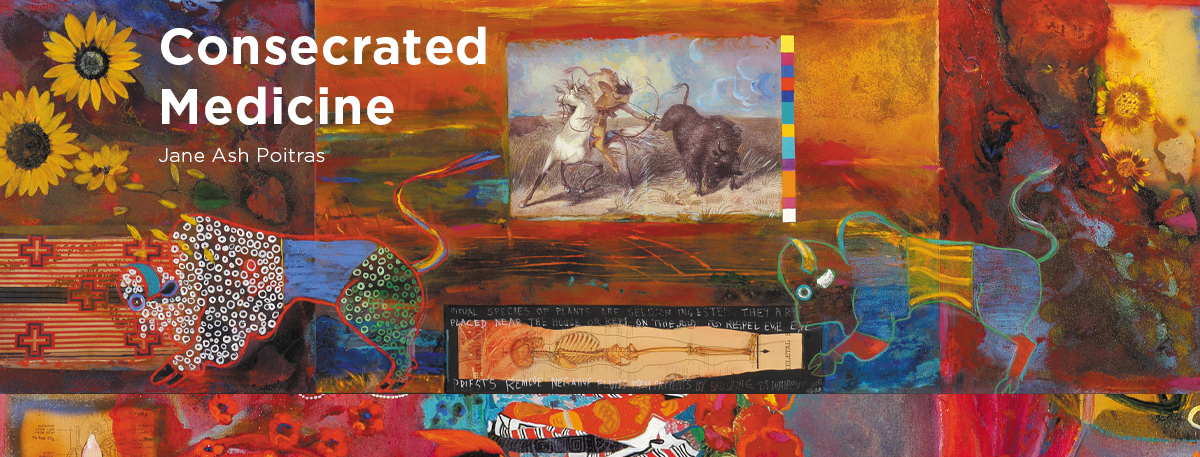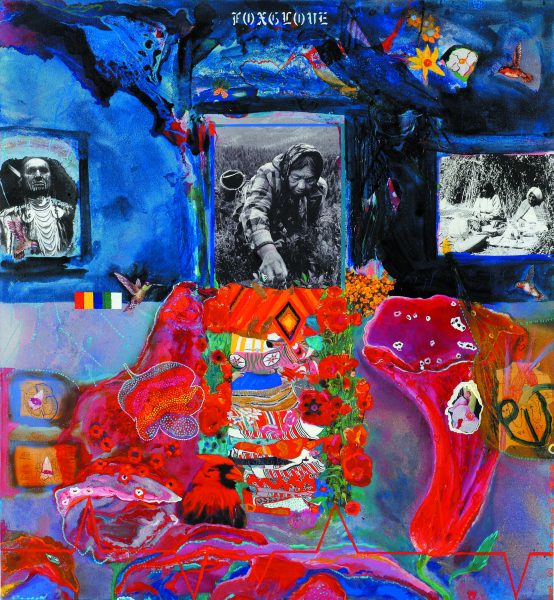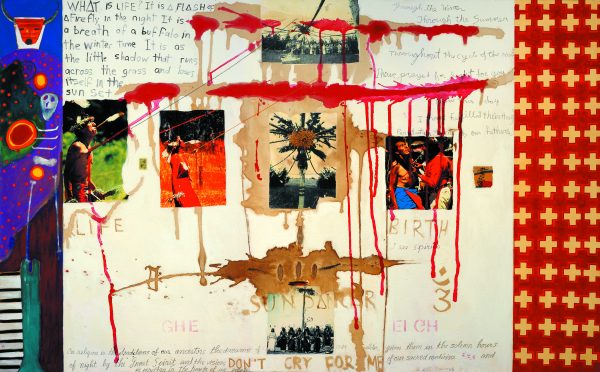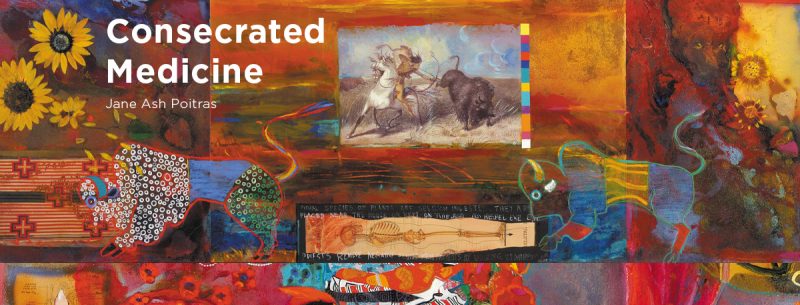Consecrated Medicine

Consecrated Medicine
ARTIST STATEMENT
My journey into the plant world started when I was a very young child. Looking back, I never thought then that my journey would take me to so many beautiful places and people. In my early twenties I was studying microbiology at the University of Alberta. During one summer, my Aunt Alfie and I hopped a plane and returned to our birthplace, Fort Chipewyan. At Fort Chip we talked to many relatives and Elders. Conversations were around the good old days of hunting, fishing and plants.
They told me that moss made the best diapers and Fort Chip potatoes were the best. They pulled out their pipes and loaded them with kinnikinnick (red willow bark), tobacco and secret herbs that were all beneficial to the good of the soul. Fort Chip is in the Boreal Forest, and exclusive to that forest is a red-topped mushroom which is prized by our people. It is not only used in ceremonies, but also for healing and spiritual communication. From Siberia to North America, the reindeer and caribou have been eating this mushroom. (Dr. George Hunter says that’s why Santa’s reindeer can fly!) The Elders told us that Native people learned which plants were good by watching the animals.

toxique by Jane Ash Poitras
After our Fort Chip visit I returned to university, completing my science degree, then working for several years as a professional microbiologist. But something inside me was tugging at my heart, pushing me to take art courses. At first I took night courses, then completed a BFA in printmaking. My post graduate work in art was completed in New York City with an MFA at Columbia University. By this time I had gone back to my traditional ceremonies, especially the sweat lodge. The medicine man would pass on teachings inside the ceremony, many stories of plants and animals.
My journey then took me to the Southwestern United States. There I met many Elders and shamans. They invited us into their sacred ceremonies. We shared our stories from the North, and they invited us into their American Indian Church. They shared their medicine with us, especially peyote. We learned their songs and the way of the Red Road. From there my journey took me to Amsterdam, Paris, London, Mexico City, Washington and many other places across North America. Everywhere I went, people, healers, shamans taught me about their sacred plants.
I started to have dreams of plants talking to me, telling me that it was time to share my insights with whoever wanted to hear them.
I went back to university and took some courses in ethnopharmacy and botany. My artist’s assistant built a greenhouse for me, God bless his soul. We also built a Hogan and invited Elders and friends to join us in ceremonies.
Now, wherever I go, someone has stories of plants and flowers. (Yarrow is good for menstruating women. Rhubarb is good for arthritis and circulation.) I would be sitting in a pub and all the oldtimers would show up. Into the wee hours of the night we would be talking about plants, gardens, birds, and bees. People would come over to the yard and I would walk them around, telling them which herb or plant they could taste, and how it is used beneficially.
So that’s how my art went from political to plants.
Visualizing plant medicine is a lifetime journey. Without the help of my family, my friends and my artist’s assistant, Mike Shokal, I would not be here today sharing with you.

Sundancer Don’t Cry for Me by Jane Ash Poitras
I thank the Canada Council and the Alberta Foundation for the Arts for their support. Without their help I would not have been able to complete this body of work. My thanks also to the Thunder Bay Art Gallery, Director Sharon Godwin and her staff. And what is an art show without a curator. My heartfelt appreciation to Virginia Eichorn, who kept me going when I needed encouragement.
God bless you all.
Enjoy the show.
— Jane Ash Poitras


